'There’s elegance in everybody:' The Black Women Transforming Elite Gymnastics
KATY, TX — “Roll over onto your tummies, keep your legs together, arms straight, and now slowly lift both as high as you can and squeezeeee!” said the instructor, as she sauntered around the room, carefully examining each student’s form.
“Keep those toes pointed. Hold for 5...4...3...2...and 1.”
Nearly two dozen level 1 and 2 gymnasts—girls around the ages of 5 to 7—gathered on the cobalt blue-carpeted spring floors at Stars Gymnastics Sports Center in Katy, Texas, for their 55-minute Monday night class, practicing their cartwheels and conditioning—moves that would be far too difficult for the average person—with ease.
Everything about the atmosphere was colorful—the vibrant red and black cubes that filled the foam pit, the bursts of yellow found in tumbling octagons and trapezoids, the swirls of fuschia, purples, and neon glittered leotards, all complemented by the various shades of melanin that radiated in the students around the room.
The side door creaked open and the room fell silent as the elite women of USA Gymnastics entered the facility in a single file line for their second national team camp of the year.
“That’s Simone Biles,” said a young girl in the class. Her skin was a deep, rich shade of umber brown. The kinks and coils that crowned the top of her head were compacted by an elastic, forming an imperfect puff that was slightly disheveled (as expected) from tumbling class.
“She’s all the way over there with the gray backpack.”
I’d made the trip to Texas to cover the senior team’s camp. As I sat in the balcony watching the U.S. women’s national team rotate through each apparatus during their three-hour-workout, it was almost as if time stood still, with the future generation of gymnastics physically sharing the room with the sport’s biggest stars of the present.
Dominique Dawes became the first Black woman to win an individual Olympic medal in 1992, but before Gabby Douglas became the first Black woman to win the all-around title and Simone Biles, with all her power and prowess, redefined the landscape as perhaps the greatest gymnast of all time, seeing Black women consistently succeed in gymnastics was a rarity.
Now in 2024, six Black women—Simone Biles, Skye Blakely, Jordan Chiles, Shilese Jones, Kaliya Lincoln, and Zoe Miller—comprise a third of the U.S. Senior Women’s National Team, training fervently to bring their Olympic dreams to fruition in Paris this summer.
The ripple effect of their passion, discipline, and diligence can be seen in gyms all over the world, in the spirited faces and ignited hearts of young Black and Brown gymnasts who hold a newfound, zealous love for the sport.
The six elite seniors of Team USA have helped change the face of gymnastics, but they’re not far removed from their own first days in the sport, when many recall the isolating feeling of taking on a new challenge as the only Black girls in their gyms.
Across the group, these gymnasts recall experiencing pressure to conform to more Eurocentric beauty standards, from the way they wore their uniforms to the way they styled their hair.
“I never thought that Black gymnasts could be as good,” Zoe Miller said, recalling childhood days of watching gymnastics on TV and seeing the coverage and the medal podiums dominated by competitors who looked nothing like her.
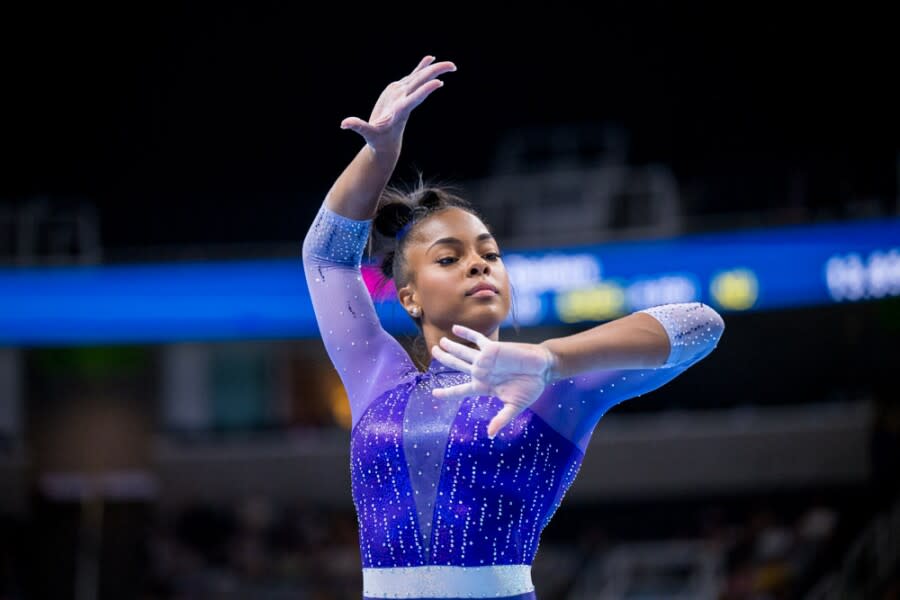
2020 Olympic silver medalist Jordan Chiles noticed that she was different as early as 6 1/2 years old, when she first set foot in the gym.
“I [remember] looking around [and thinking] there’s no one else that looks like me,” Chiles said.
“I was known for having a little afro puff on the top of my head—something that little girls love so much. But I started straightening my hair because I thought, ‘This is what gymnasts are supposed to look like.’”
It was an insecurity that was explicitly reinforced by a former coach.
“My hair was braided and she cut my braids out,” Chiles said. “She said that it wasn’t what gymnasts were supposed to look like. Those things made me wonder, ‘why do I have to change what [I look like] when I’m still talented?’”
Two-time world team champion Shilese Jones grew up in Auburn, Washington—approximately 30 miles from Seattle, where only 7.5% percent of the city’s population of around 85,000 identifies as Black or African American. For years, Jones was the only Black girl in her gym.
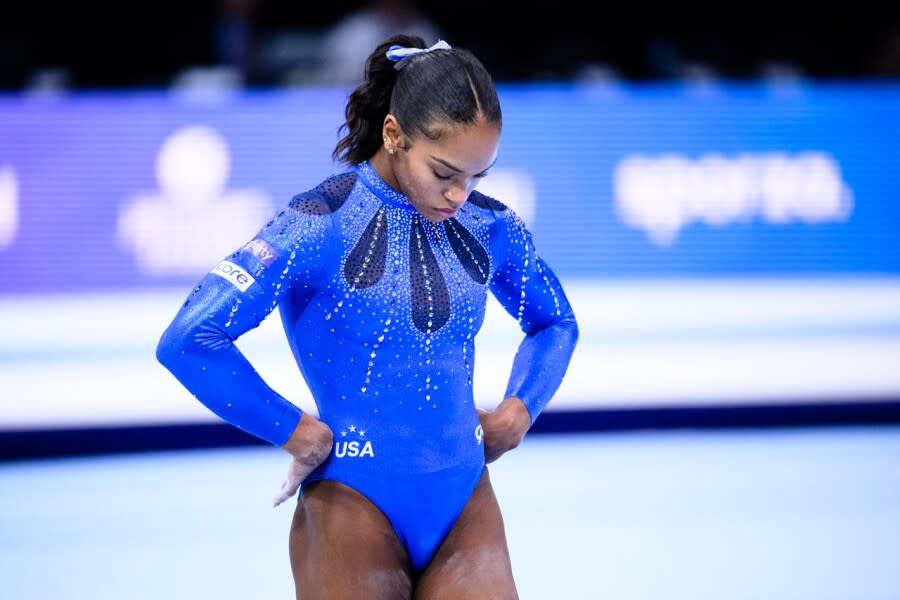
“When I was first going to camps, I would come with my hair braided into a bun. It was styled for the month,” Jones said. “I was told, ‘You can’t come with your hair like that, it needs to be straight.’ I would tell them this is how my mom sent me and this is what I like so why can’t I have that? It was devastating at first because why is this a problem? Why are you even studying my hair? Shouldn’t people focus on the gymnastics?”
For Jones, the attention to her hair was just one of the challenges.
“When I first made the national team, they didn’t have leotards for my skin tone,” she told me. “At competitions, I would have to wear the ‘nude’ color that didn’t match my skin. I had to get to competitions two hours early because I needed to go to CVS and buy makeup to paint my athletic tape and pre-wrap. It was a deduction at the time, but there was no other way.”
Parents too shoulder a heavy burden when their children feel ostracized from the sports they love.
Stephanie Blakely enrolled her two daughters, Skye and Sloane, in gymnastics to add to an already packed roster of childhood activities, which included ballet, tap, and jazz. Stephanie, who grew up in a rural city in Texas, competed nationally as a dancer and a twirler when she was younger and knew firsthand what it was like to be the only person of color in a sport.
“I was 4 years old when my mother put me in ballet,” Stephanie said. “In the very beginning [of class] our instructor asked us to hold hands and the girl next to me refused to hold my hand. She said, ‘I can’t hold her hand, her Black is going to rub off on me.’”
“She learned that from her parents—from her home—and that’s sad. That’s how I was introduced to racism.”
But Stephanie didn’t want her own childhood experiences to stop her girls from finding their passions.
“I didn’t [sign them up] thinking this might be challenging or difficult for them because it’s just been a way of life and I wasn’t going to allow the fact that they were the only ones, to prevent us from trying it and doing it.”
“Let that fuel you.”
Those are the words Stephanie and her husband Steven have instilled in Skye and Sloane.
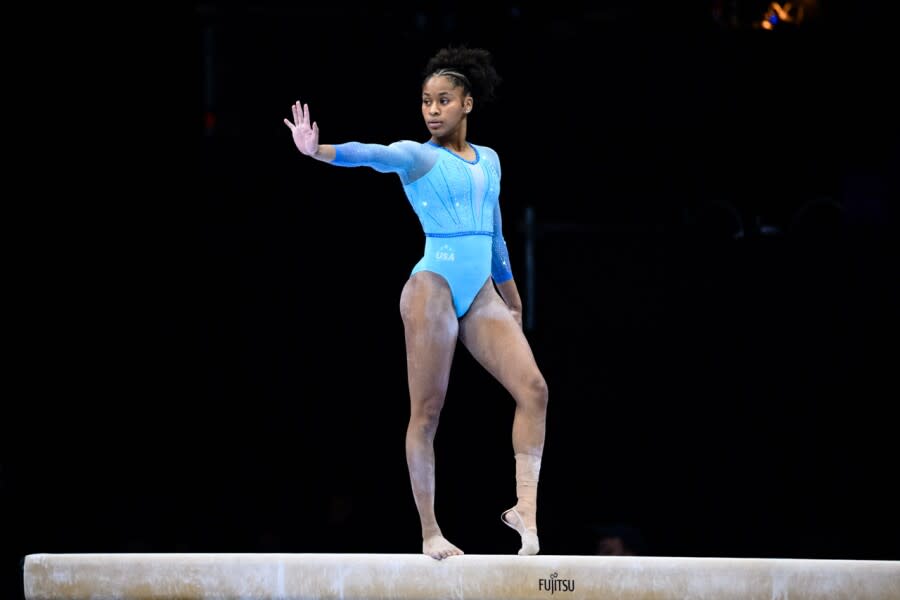
“We’ve always encouraged them to be trendsetters,” Stephanie said. “If it’s never been done before, do it. You may be few in numbers but standards are high; go forth and do great things.”
While the community at the Blakelys’ home gym has always been welcoming, it didn’t exclude them from the scrutiny of their appearance.
“We used to put their hair in buns with a little hair net on top, but we stopped doing that and went to the puff,” Stephanie explained. “I remember our coach at the time really discouraging [Skye] from doing that and wanting her to fit [the mold] of what she thought gymnasts should look like, which has traditionally always been a white girl.”
A common question—and misconception—was if the puff would slow Skye down.
“No, it’s not going to slow her down,” Stephanie recalled explaining. “It’s the ignorance. Educate yourselves. I’ll never forget, even when I was in school, little kids thought my hair didn’t get wet. I’m not a duck. Black women’s hair does get wet, [water] doesn’t repel off. It just looks different.”
For Stephanie, it was essential to create space for her daughters to conform to their own standards.
“We didn’t go back to the bun. We said this is who I am. This is how I want to wear my hair. It doesn’t prevent me from performing. It represents me.”
But protecting that space wasn’t always possible, particularly at photoshoots and marketing campaigns.
“For hair, they just said ‘show up with your hair straight'—blanket instructions that did not [consider] Black people. I got the girls’ hair straightened and vowed to myself afterward that we would never do that again. That’s not how they perform. That’s not how they compete.”
“If you’re using them as subjects in your ads or whatever it is that you’re doing photos for, then you need to get someone there who understands Black hair, and you need to get makeup artists that have experience doing Black skin.”
So what was it, amidst aesthetic barriers and marginalization, that kept these women motivated in pursuit of their dreams?
August 2, 2012. The day Gabby Douglas became the first Black gymnast to win the Olympic all-around.
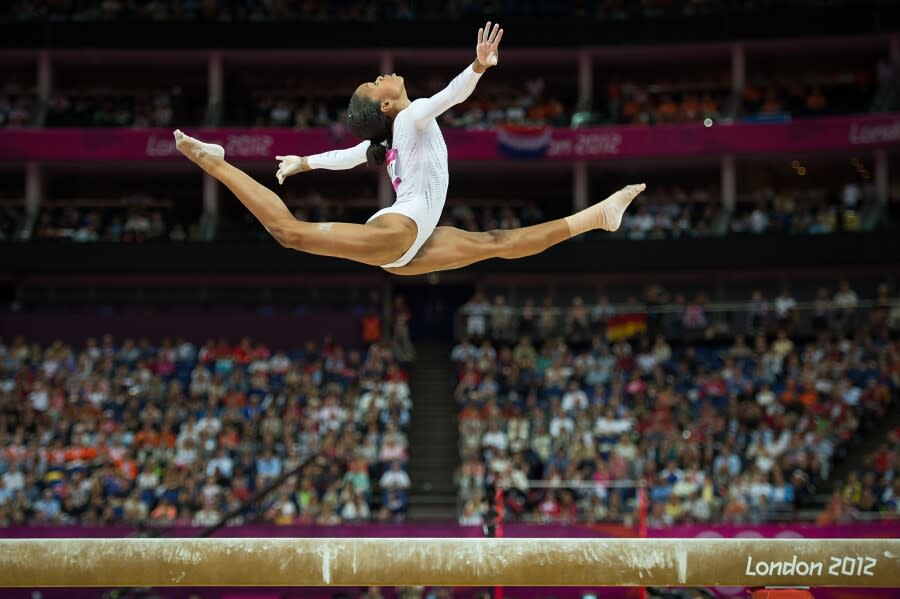
In speaking to a handful of these gymnasts, Douglas’ name came up time and time again. The picture they shared with me was of an essential moment in which Douglas stood on top of the podium, radiating in all of her melanin glory, creating an unbreakable foundation for these women to stand on—a memory that would forever live on their impressionable hearts, fueling them in the moments when they need it most.
Teaching them that if you can see it, you can be it.
“I was 7 when she went to the 2012 Olympics,” Skye Blakely recalled. “That was the first Olympics where I was really old enough to understand and really see what was going on. For it to be that moment and for her to be Black...to see that, that young, it definitely inspired me. I was like, ‘I want to be exactly like her and do what she’s doing.’”
“When [Gabby] went to the Olympics and won as the first African American that was a huge deal for me,” Kaliya Lincoln said. “She’s definitely one of my biggest role models in gymnastics.”
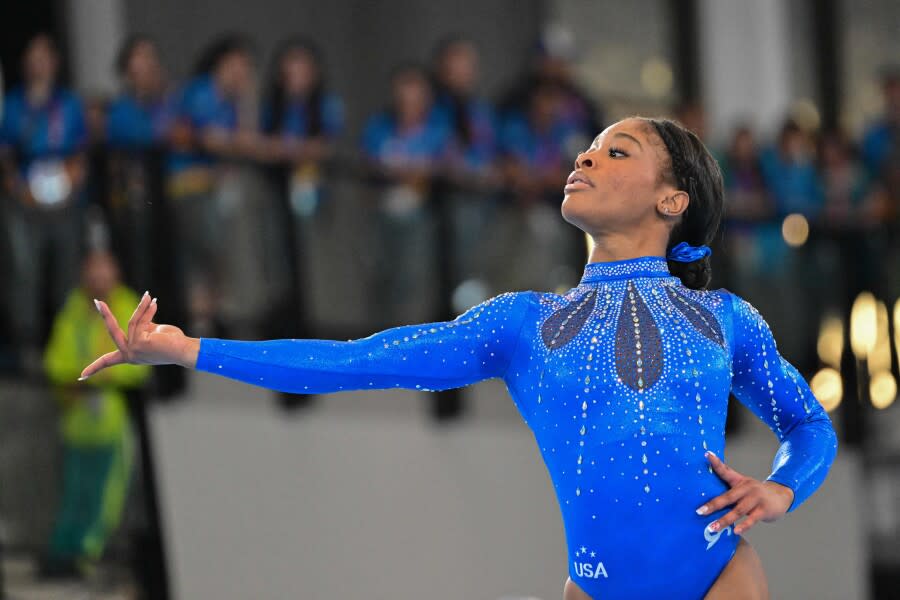
Lincoln, a Frisco, Texas native who took the gold medal on the floor exercise at the 2023 Pan American Games, actually watched the London Games during a family trip to Disneyland and says she started gymnastics because she was inspired by the 2012 all-around champion.
USA Hall of Famer Dominique Dawes did not have similar representation as she worked to make history in 1992.
“There were [many] young girls of color at my gym in Maryland but when I would compete on the national, Olympic, and international level, there was not a lot of diversity,” Dawes, a three-time Olympian, told me. “We didn’t have a great deal of role models that we would see on TV thriving and excelling in the sport.”
“I think for some people, they need to see people that look like them to plant that seed of inspiration and to have that dream, and there wasn’t any of that. Whenever I watched gymnastics, I didn’t see anyone that looked like me, so it wasn’t like I felt connected or inspired to be an Olympic gymnast.”
The four-time Olympic medalist relied on her faith to get through those hard times.
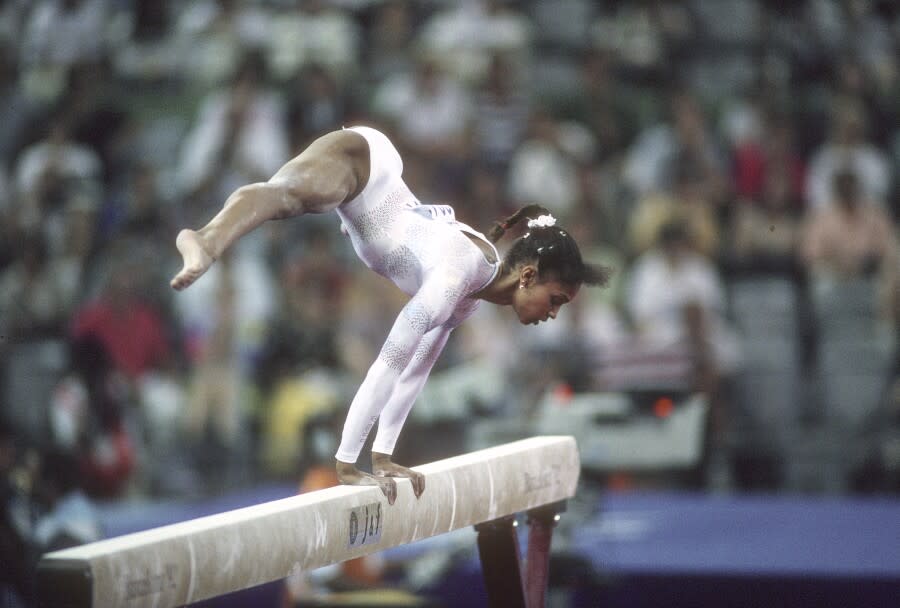
“Being a young African American girl that was coming up in a sport that lacked diversity internationally and nationally, you did feel different because you stood out,” Dawes said. “I not only stood out because the color of my skin was different but also my body type was not going to score as well as others maybe would. It was not a comfortable space to be in as a young African American girl.”
In the early ‘80s and ‘90s, Dawes was considered, in her own words, “a walking deduction.”
"[The judges were looking for] a body type that was not extremely muscular, not so much of a super stocky build, which is what I had... A lot of my routines [received] major deductions because of things I couldn’t control,” Dawes explained.
“My legs weren’t what they were looking for with regards to lines. I wasn’t able to point my feet a certain way [because they are flat] and [received deductions] for my legs not coming together because they are bowed. I was constantly trying to make those adjustments to be able to accommodate the way the sport scores.”
Black women with muscular builds often failed to thrive in artistic sports like gymnastics and figure skating, frequently labeled as “powerful” as opposed to “graceful” or “elegant.” Historically in gymnastics, the latter terms took precedence.
It’s a limiting mindset that’s evolved in the last twenty years, and been fundamentally transformed at the hands of Simone Biles.
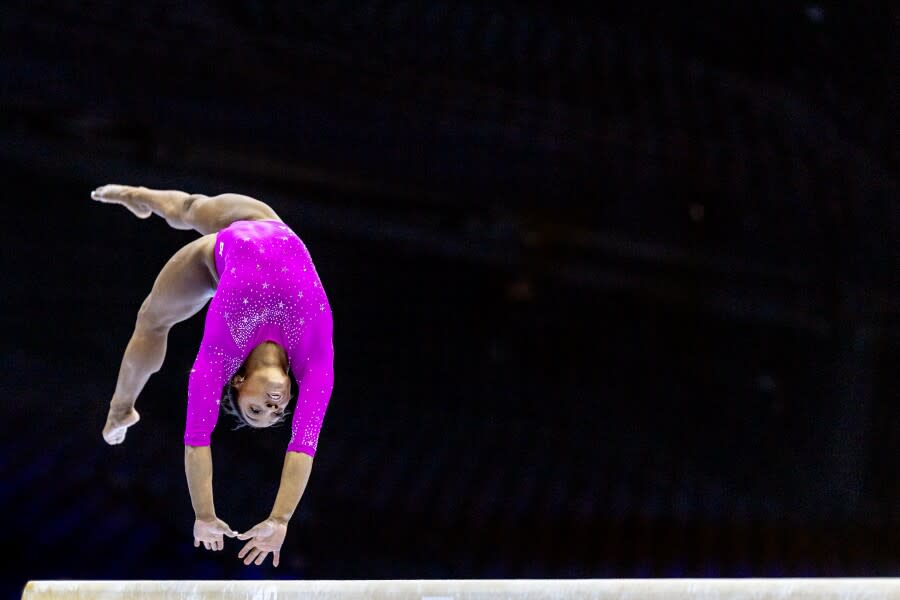
“Seeing how good she was at every event really opened my eyes…Gymnastics used to be so much about poise and prettiness and all that but Simone brought power and tumbling,” said Zoe Miller.
Jordan Chiles is no stranger to the cliches.
“I’ve heard people say about me, ‘Oh she’s so strong, she looks like a man,’" Chiles said. “I’m powerful but I can still be elegant because my elegance can come from something different. It can come from the way I point my fingers, it can come from how I use my chin... there’s elegance in everybody.”
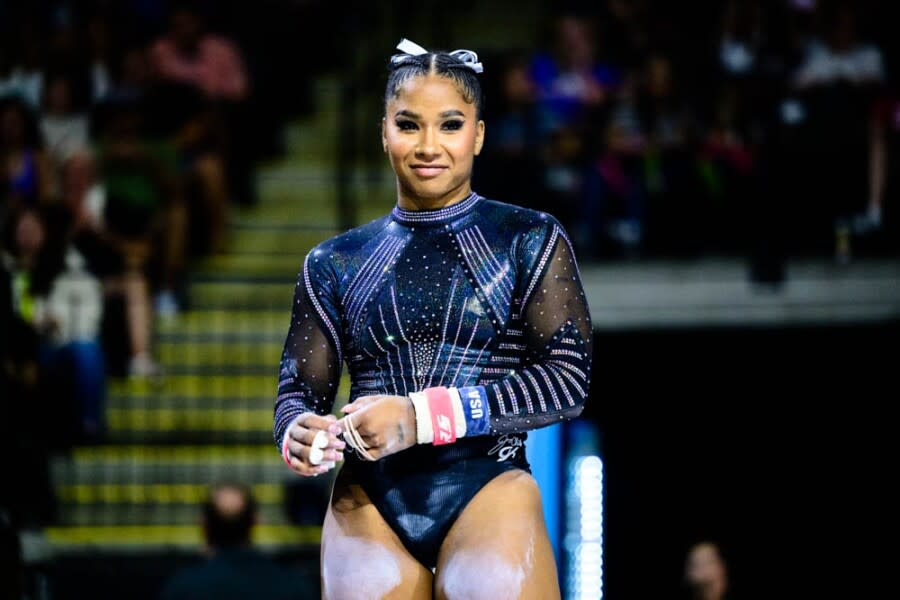
Last October, at the 2023 World Championships in Belgium, three Black women—Simone Biles, Brazil’s Rebeca Andrade, and Shilese Jones—swept the all-around podium for the first time at a global event. Just one year prior, in 2022, Konnor McClain, Shilese Jones, and Jordan Chiles became the first Black women to sweep the podium at a U.S. Championships.
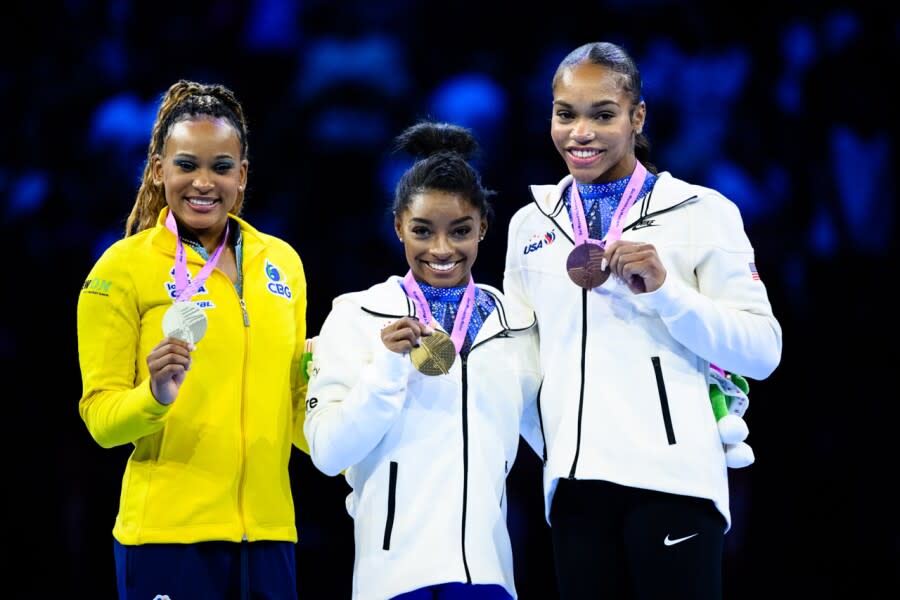
“It honestly means so much, not just to me, but to my younger self and to my little niece who is growing up,” Jones said of being part of both milestones.
The progress is evident but so too is the continued need for improvement across a sport where officials, judges, trainers, coaches, and doctors of color are not the norm.
At first glance, the current representation of the U.S. senior team might make one think that the environment has always been inclusive but that hasn’t been the case. In covering the Olympics broadly and speaking with many of the Black women of USA Gymnastics for this story, I’ve come to realize an essential reality: whether it was intentional or not, many of them have walked through ostracizing experiences. But these women are thriving. They are dreaming. They are winning. They are inspiring and empowering in spite of it all—the microaggressions, the criticism, the pressure. They are working, often in ways their peers don’t have to. They’re not shrinking in spaces where they are expected to conform. They are making room at the table not just for Black women, but for all women of color.
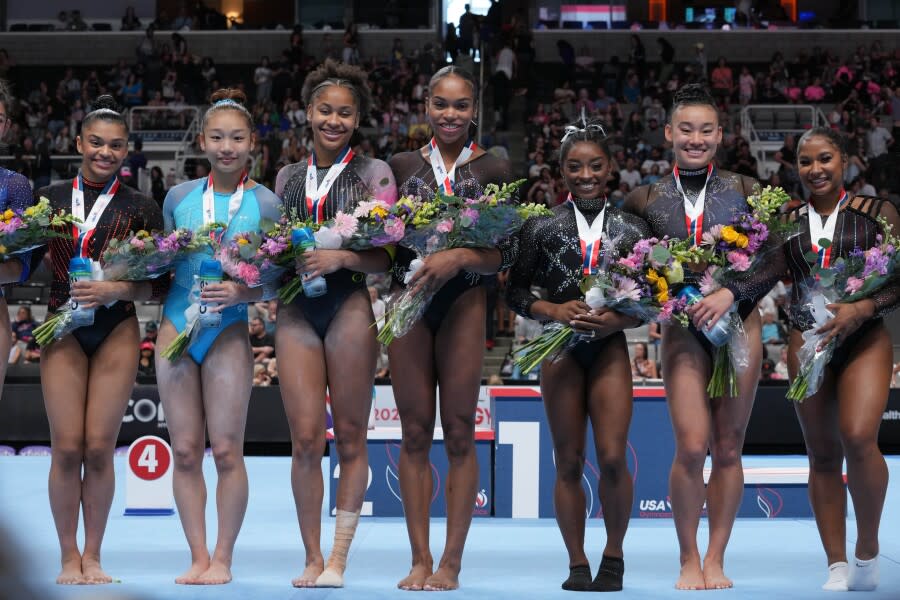
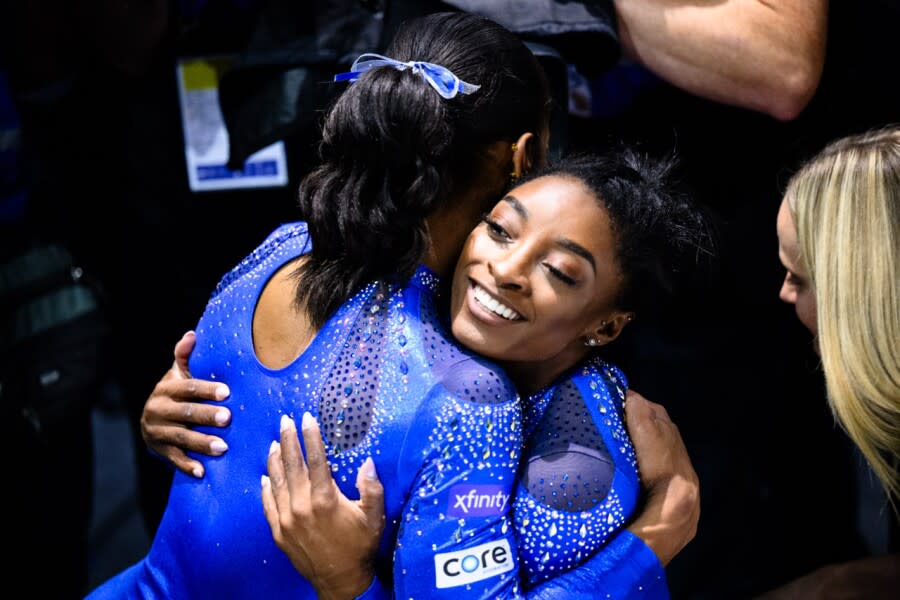
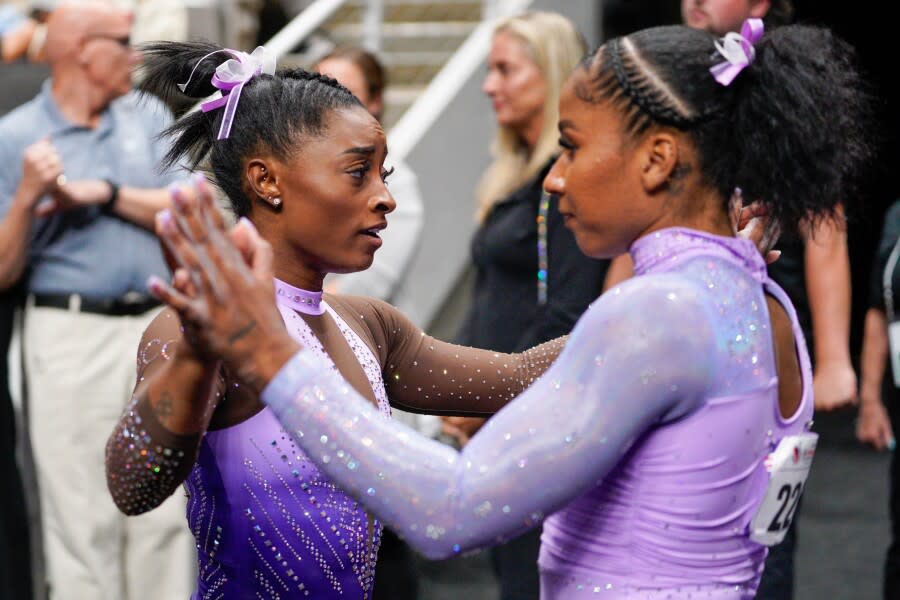
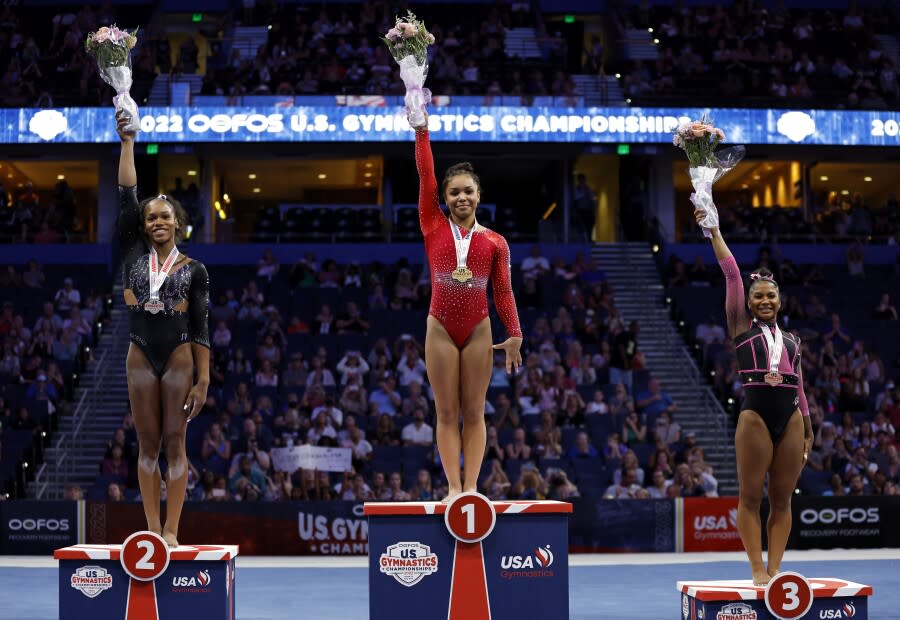
It’s hard not to think that those that went before them, in the world of sport and the world generally—those who fought and bled for the opportunity to be equal—would be proud that despite the challenges, the six senior Black women of Team USA continue to pave the way for themselves and future generations.
“I try to inspire and encourage others to be their own person because anything is possible. If you have that dream don’t let anything stand in your way,” Jones said. “If there’s something different about you, use it to inspire and put that art into your gymnastics. Your differences are beautiful."

